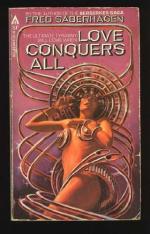Advertising, with its billboard message of rustless screens and co-educational turkish-baths, has done much to further the good cause, and a glance through the files of newspapers of seventy-five years ago, when the big news story of the day was played up in diamond type easily deciphered in a strong light with the naked eye, shows that news printing has not, to use a slang phrase, stood still.
But in the midst of this uniform progress we find a stagnant spot. Surrounded by legends that are patent and easy to read and understand, we find the stone-cutter and the architect still putting up tablets and cornerstones, monuments and cornices, with dates disguised in Roman numerals. It is as if it were a game, in which they were saying, “The number we are thinking of is even; it begins with M; it has five digits and when they are spread out, end to end, they occupy three feet of space. You have until we count to one hundred to guess what it is.”
Roman numerals are all right for a rainy Sunday afternoon or to take a convalescent’s mind from his illness, but to put them in a public place, where the reader stands a good chance of being run over by a dray if he spends more than fifty seconds in their perusal, is not in keeping with the efficiency of the age. If for no other reason than the extra space they take, involving more marble, more of the cutter’s time and wear and tear on his instruments, not to mention the big overhead, you would think that Roman numerals would have been abolished long ago.
Of course, they can be figured out if you’re good at that sort of thing. By working on your cuff and backs of envelopes, you can translate them in no time at all compared to the time taken by a cocoon to change into a butterfly, for instance. All you have to do is remember that “M” stands for either “millium,” meaning thousand, or for “million.” By referring to the context you can tell which is more probable. If, for example, it is a date, you can tell right away that it doesn’t mean “million,” for there isn’t any “million” in our dates. And there is one-seventh or eighth of your number deciphered already. Then “C,” of course, stands for “centum,” which you can translate by working backwards at it, taking such a word as “century” or “per cent,” and looking up what they come from, and there you have it! By this time it is hardly the middle of the afternoon, and all you have before you is a combination of X’s, I’s and an L, the latter standing for “Elevated Railway,” and “Licorice,” or, if you cross it with two little horizontal lines, it stands for the English pound, which is equivalent to about four dollars and eighty-odd cents in real money. Simple as sawing through a log.
But it takes time. That’s the big trouble with it. You can’t do the right thing by the office and go in for Roman numerals, too. And since most of the people who pass such inscriptions are dependent on their own earnings, why not cater to them a bit and let them in on the secret?




